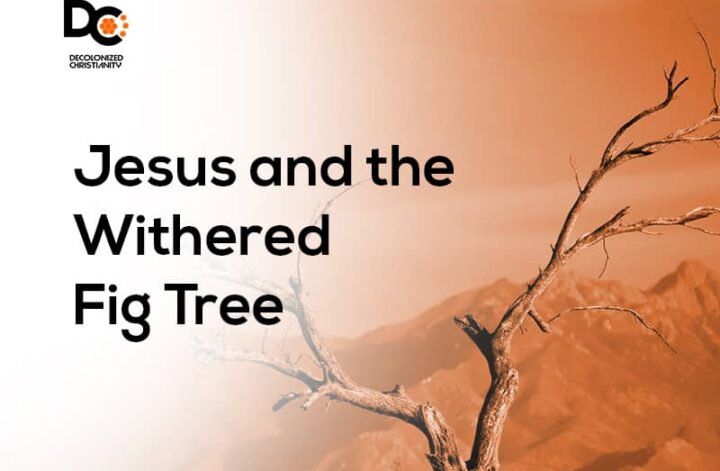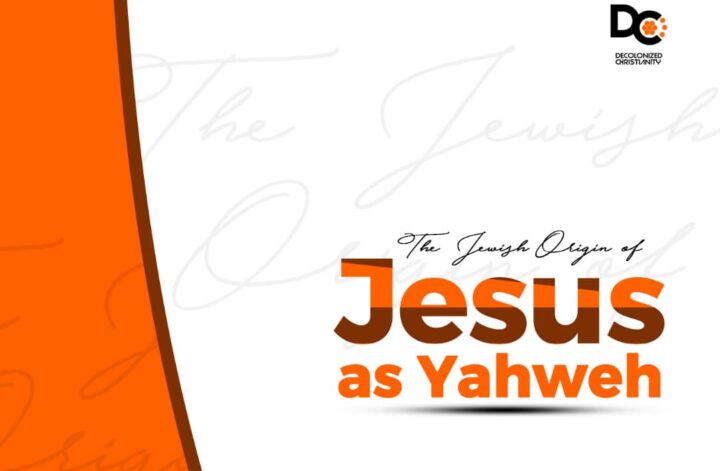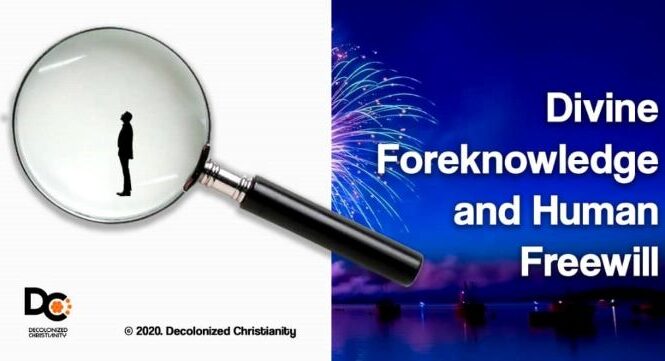The work of Esther Miquel with which we have extensively interacted already explained much of Mark 11, but there yet remains some knotty portions of Mark 11 requiring text-faithful explanations. In his contribution to the issue, J.R.D Kirk stresses the importance of bringing the full context of Markan Jesus’ Old Testament allusions to bear on one’s reading of Mark 11. While aggressively disturbing the typical temple operations, Jesus taught the audience by combining two references from the Hebrew Bible when he said, “Is it not written: ‘My house will be called a house of prayer for all nations’? But you have made it ‘a den of robbers’” (Mark 11:17). The referenced Old Testament passages are Isaiah 56:7 and Jeremiah 7:11. Kirk warns against reading these citations in isolation from their respective broader contexts. Instead, he argues that if one reads those citations of Jesus as a Tanakh-literate first century Jew would have done, one could understand the portions of Mark 11 that seem problematic.
What’s up with Isaiah 56?
This chapter of Isaiah seems to have been written at a troubling time, perhaps an exile, for Israel as evident by verse 8,
“The Sovereign Lord declares—
he who gathers the exiles of Israel:
“I will gather still others to them
besides those already gathered.
The chapter opens with a call to “Maintain justice and do what is right” in expectation of a future “salvation” and “righteousness” that “is close at hand” (56:1). It then pronounces as blessed anyone who carries out the admonition of verse 1 and evidences it by keeping “the Sabbath without desecrating it” and “their hands from doing any evil” (56:2). The prophecy then stresses the literalness of “anyone” in verse 2 by including eunuchs and “foreigners who bind themselves to the LORD” as acceptable to the God of Israel if they show themselves devoted to him by their righteous deed (56: 3-7). To the Yahweh-worshipping eunuchs, the prophecy promises to give them a “memorial and a name better than sons and daughters” –and this will be inside Yahweh’s “temple and its walls” (56:5). To the foreigners, God promises to bring them to his “holy mountain and give them joy” in his “house of prayer” (7). The prophecy further adds (56:7):
Their burnt offerings and sacrifices
will be accepted on my altar;
for my house will be called
a house of prayer for all nations.”
It would seem like what used to be an exclusive Jewish cult would be opened to all people who would be faithful to Yahweh. Verse 8, quoted above, seems to indicate that the content of this prophecy up to that point will find a future fulfillment. Kirk writes that Isaiah 56:7 “is part of a vision for the as-yet-future intervention of God to save Israel” and then adds that the anticipation of divine “intervention becomes a part of Israel’s ongoing expectations for the future in the Second Temple period” (515). Indeed, there are many other Jewish literatures adding details to this future eschatology when Israel would be restored. Kirk warns that “Jesus’ citation of Isa 56:7 should not be read simply as a statement about a desired state of affairs that Jesus did not find when he entered the temple precincts” (516). Instead, by citing Isaiah 56:7, Jesus was teaching the people that the Herodian temple of his day was not the hope of Israel, the prophesied “house of prayer for all nations.” It is worth pondering at this point: if that temple was not the fulfillment of Isaiah’s vision, what then would be its fate? We shall address this point shortly.
What’s in Jeremiah 7?
Jesus’ allusion to this chapter is interesting. The chapter opens with a word from Yahweh to the prophet Jeremiah: “stand at the gate of the Lord’s house and there proclaim this message” (7:2). In other words, Jesus, while himself inside a temple, quotes from another prophet’s temple sermon. This temple sermon warned the Israelites against believing that the temple would keep them safe while they indulged in all kinds of corrupt practices including maltreatment of foreigners, the fatherless and widows, the shedding of innocent blood, and idolatry (6). The Israelites seem to have developed a false theology involving a genuine belief that the temple building was a literal strong tower that the sinning persons, without remorse or repentance, may run to for safety. This prompted Yahweh to ask: “Has this house, which bears my Name, become a den of robbers to you? But I have been watching!” (7:11). The people had turned the temple to a place where criminals retired after committing all kinds of evils, and they did all this believing that they were safe. Interestingly, Yahweh tells the people to “Go now to the place in Shiloh where I first made a dwelling for my Name, and see what I did to it because of the wickedness of my people Israel.” Of course, Yahweh destroyed the temple in Shiloh and is here appealing to the people to see how faulty their theology of safety is.
In Mark’s context, the dual allusions to Isaiah and Jeremiah seem purposely directed to a definite end. The Isaiah reference shows that the Herodian temple was not the glorious future that Isaiah prophesied, while the Jeremiah’s allusion was a veiled remark about the imminent future of the building. This is even more so when we consider Mark’s literary arrangements and the fig tree episode in particular. Kirk writes (519):
Rather than resting in the time of eschatological restoration, Herod’s edifice parallels the first temple in the days of Jeremiah: it stands awaiting God’s judgment. If Isa 56:7 tells us that the temple is falling short of Isaiah’s depiction of the blessed precinct of the last days, Jer 7:11 tells us that it is like the cursed temple of old, awaiting divine destruction by the hands of Israel’s enemies.
We can conclude that within the narrative of the Gospel according to Mark, Jesus’ words and deeds in the temple predict destruction, not glorification, of the Herodian temple. Scott Brown (84) also agrees that the broader “context of Isa 56:1-8 suggests that Jesus was anticipating the fulfillment of Isaiah’s eschatological vision of the temple as a place where anyone who keeps Yahweh’s covenant may freely worship (i.e., not only pure Israelites but also foreign proselytes, ‘eunuchs,’ and ‘the outcasts of Israel’).” Instead, Jesus found temple worship perverted, and the temple building had become a “source of security for people who commit nefarious deeds” (84). Brown comments on the relationship between the fig tree and temple-clearing episodes thus (83): “If the fruitless tree connotes an absence of righteousness, and this unrighteousness is manifest in the intrusion of commerce into God’s house, then Jesus’ inspection of the leafy tree for fruit provides symbolic commentary on his inspection of the temple in 11:11.”
It was not the time for figs—what time was it?
The Marcan editorial comment that Jesus did not find any fruit on the tree “because it was not the time for figs” remains to be explained. Kirk argues that Mark may have used this statement to serve the literary purpose of suggesting to his readers that it was not the time of harvest of righteousness or glorification (521). In the agrarian culture of ancient Near East, it was common to use agricultural language in communicating theological truths. The Hebrew Bible is replete with such languages. We have already seen this agrarian theological language in Isaiah 5. Micah 7:1 presents another example:
What misery is mine!
I am like one who gathers summer fruit
at the gleaning of the vineyard;
there is no cluster of grapes to eat,
none of the early figs that I crave.
An impending divine judgement is the context of this verse above. There was so much depravity in the land that was reminiscent of the evils depicted in Jeremiah 7. Interestingly, the prophet Micah adds in 7:4:
The day God visits you has come,
the day your watchmen sound the alarm.
Now is the time of your confusion.
While there are no decisive textual reasons to conclude that Mark intended Micah 7 to influence how his audience should read his work, the allusions are vivid. Micah depicts God as visiting his people, craving early figs which are non-existent just as Mark depicts Jesus as finding no figs on the tree. In both cases, divine judgement was pronounced on the land as a result of a lack of fruit. Since we know that Mark uses the fig tree episode to comment on the temple, Jesus’ pronouncement against the tree is a judgement against the temple. Hence, Kirk writes:
The strange editorial comment interjects the question of what time it might be into the fig-tree/temple-clearing unit. The answer provided by the biblical allusions is that it is not the time of harvest, representative of eschatological glory, but instead the time for judgement, for stripping the tree bare. (521)
The idea that Mark may have used the editorial comment to invite his audience to wrestle with what time it was finds support within the narrative itself. Kirk points out (521-522) how Mark introduces the ministry of Jesus in 1:15, “The time has come.” Furthermore, in the Olivet Discourse (Mark 13) which explicitly says that the temple will be destroyed, Mark fills up the account with references to the timing of events, some of which concern the eschaton. In 13:14, Mark explicitly depicts Jesus as inviting his audience to grapple with the times—”let the reader understand” (13:8). Kirk concludes:
Mark’s Gospel not only invites its readers to see in the story indications of where Israel might lie on the timeline of the overarching story of God’s relationship to Israel; it clearly works out the question with special reference to the temple’s destruction. We thus are well within the parameters of Mark’s own storytelling to see the indication that it was not the time for figs as an invitation to wrestle with the question of what time it is in the ensuing narrative units. The answer Jesus gives through both acts and speech in the temple is that it is not the time of eschatological blessing in response to a fruitful Israel but, instead, the time of looming judgement before that eschatological restoration can be realized. (522)
Works Cited
Brown, Scott G. “Mark 11:1-12:12: A Triple Intercalation?” The Catholic Biblical Quarterly, vol. 64, no. 1, 2002, pp. 78–89. JSTOR, www.jstor.org/stable/43727322. Accessed 14 Nov. 2020.
Kirk, J. R. Daniel. “Time for Figs, Temple Destruction, and Houses of Prayer in Mark 11:12-25.” The Catholic Biblical Quarterly, vol. 74, no. 3, 2012, pp. 509–527., www.jstor.org/stable/43727987. Accessed 14 Nov. 2020.



